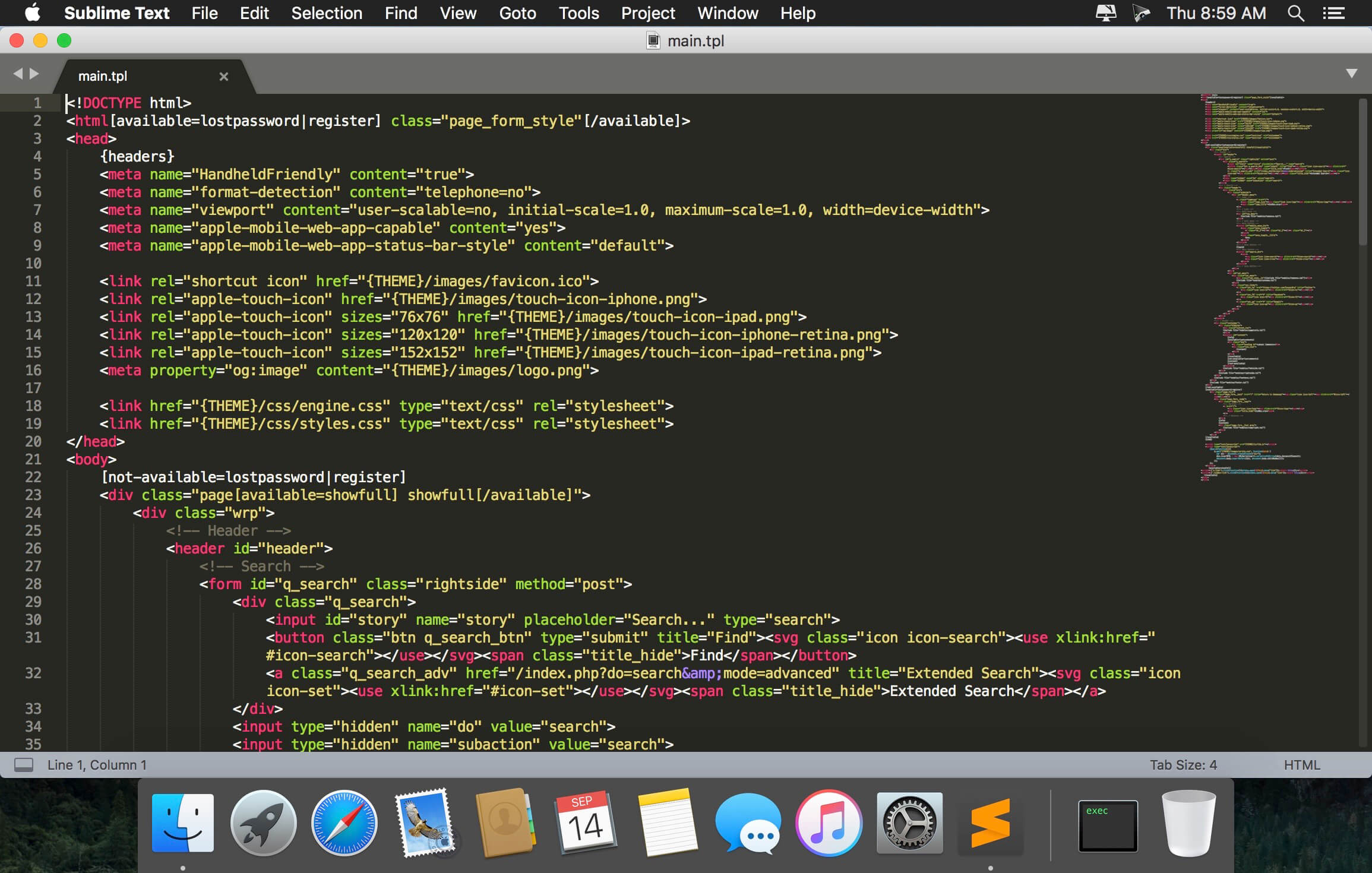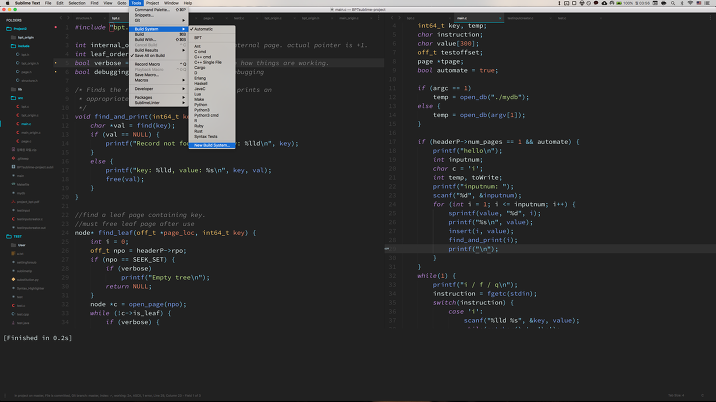

- #Run command on sublime text for mac install
- #Run command on sublime text for mac mac
- #Run command on sublime text for mac windows
In a PHP file, it will show classes and functions. What constitutes a symbol varies by filetype. Goto Symbol… (⌘R) - Jump to a “symbol” in the current file. The contents of the currently selected file will appear in the view.

Just start typing part of the name of the file you’re looking for. Goto Anything… (⌘T or ⌘P) - Fuzzy file search. Includes both default commands and those added by plugins.
#Run command on sublime text for mac mac
The standard Mac navigation works in Sublime:Ĭommand Palette… (⇧⌘P) - Allows you to execute commands by name. Now you should be able to run subl or subl to open a file or entire directory in Sublime Text. This will allow you to open files or directories directly from the command line, as well as use Sublime Text as your default EDITOR for git, etc.įirst, create a symlink from a directory in your PATH to the subl executable (NOTE: the path below is specific to OS X. This is the de facto package manager for Sublime. If you’re already a registered user and want to live on the edge, you can grab the dev build.
#Run command on sublime text for mac install
Installationĭownload and install Sublime Text 3 for your platform from. See Using Packages and Writing Plugins below. See Essential Commands belowĪutocompletion - Autocompletes based on other strings in your document.Įxtensible - Comprehensive Python API makes adding functionality through plugins (packages) easy.

Multi-Selection - You can have multiple selections and cursors, which makes block selection and mass editing a breeze. This particularly nice if you like to have “scratch pads” that you don’t want to bother saving.
#Run command on sublime text for mac windows
Hot Exit - You can quit at any time and all your windows and files–whether they’ve been saved or not–will be magically restored. Speed - Super-fast startup, and handles large repositories without breaking a sweat. Even if you’re currently a happy version 2 user, you should give version 3 a shot, as it introduces some great new features such as Goto Definition and Goto Symbol in Project, as well as performance improvements. I recommend using version 3, especially if you’re just getting started. But now almost all of the most popular plugins work on version 3. This meant that a lot of plugins had to be updated before they would work in Sublime Text 3, which slowed adoption considerably. The big change, at least internally, between versions 2 and 3 was the move from python 2.6 to 3.3 for the plugin framework. Version 3 was introduced in January 2013 and is still in beta, but many people (including myself) have been using it exclusively for some time now. The current stable version, 2.02, was released in July 2013. The core framework is written in C++ and uses a custom UI toolkit, but a large part of Sublime Text’s success is due to its extensibility via python plugins, of which thousands have been written. At the time of its first release in 2008, TextMate was an extremely popular editor for OS X, but development on it had stagnated and developers were eager to jump to something with similar power and minimalist aesthetic, but was being more actively developed. The core editor is the work of a single developer, Jon Skinner, who left his job at Google to pursue his dream of building a better text editor. Sublime Text is a popular cross-platform (Mac, Windows, Linux) text editor. Click the "Fork me on GitHub" ribbon on the right to get to the source. I welcome any edits and additions to this guide.


 0 kommentar(er)
0 kommentar(er)
